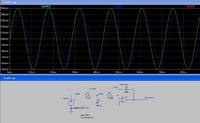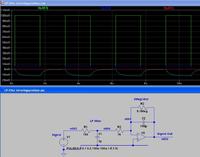orienteraren
Junior Member level 1
Hi!
I have a low voltage signal (range +/- 50 mV) after I run it through a simple LP filter. I now want to integrate the signal using a larger capacitor but if I connect the signal to the - input on the OP amp I get 0V, both on the input and on the output. I suppose this is a fundamental think in my design, any suggestions?
Best Regards
Fredrik
I have a low voltage signal (range +/- 50 mV) after I run it through a simple LP filter. I now want to integrate the signal using a larger capacitor but if I connect the signal to the - input on the OP amp I get 0V, both on the input and on the output. I suppose this is a fundamental think in my design, any suggestions?
Best Regards
Fredrik


